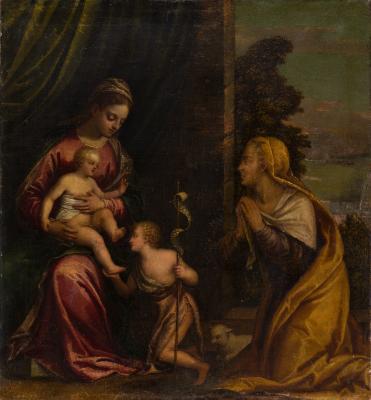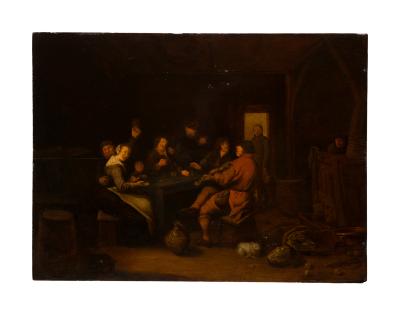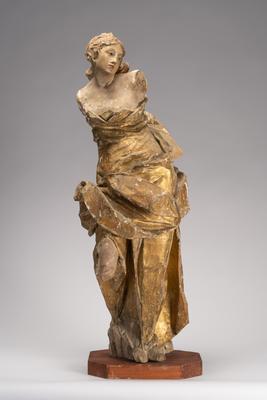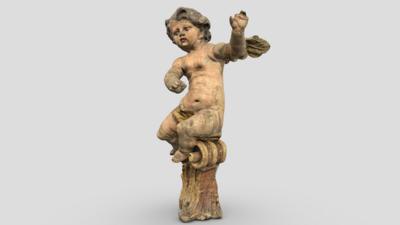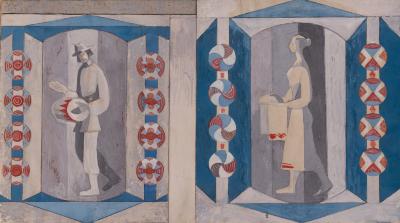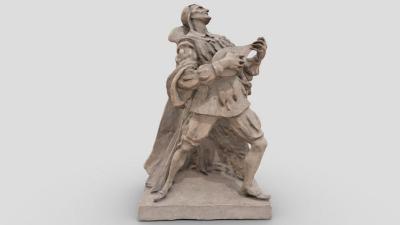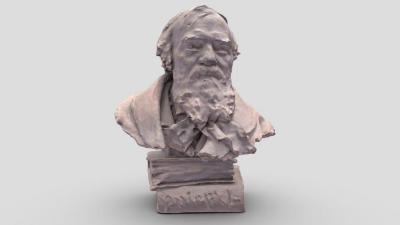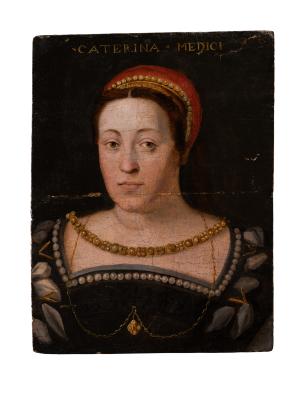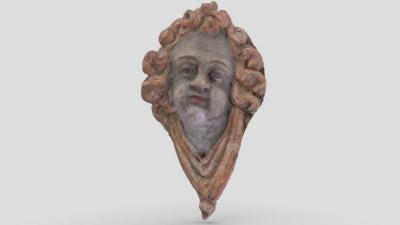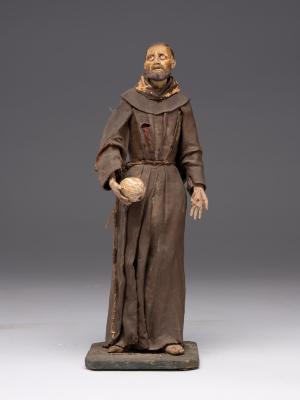Waclaw Rzewuski (1706–1779, Krzywda coat of arms) was a son of Stanislaw Mateusz Rzewuski and Ludwika Kunicka. His wife was Anna Lubomirska (c. 1717–1763), a daughter of Josef Lubomirski, voivode of Chernihiv. Waclaw Rzewuski was a Grand Crown Hetman, statesman and politician of the Polish-Lithuanian Commonwealth. The man is depicted on a dark background. He is dressed in a light zhupan, a long lined inner garment, with a red kontusz, an outer garment, over it, which is girded with an expensive Slutsk belt. The portrayed man holds a hetman's mace in his right hand. Waclaw Rzewuski is depicted with a blue ribbon and the Order of the White Eagle, which he was awarded with in 1735. A respectable man with a long beard has a tired facial expression. Despite the small size of the work, the image imitates the traditions characteristic of the ceremonial and representative works of the 18th century, which are characterized by ceremonial monumentality and static posture. A similar full-length portrait is in Wilanow palace. That particular work served as a model for the creation of many bust-length portraits.









